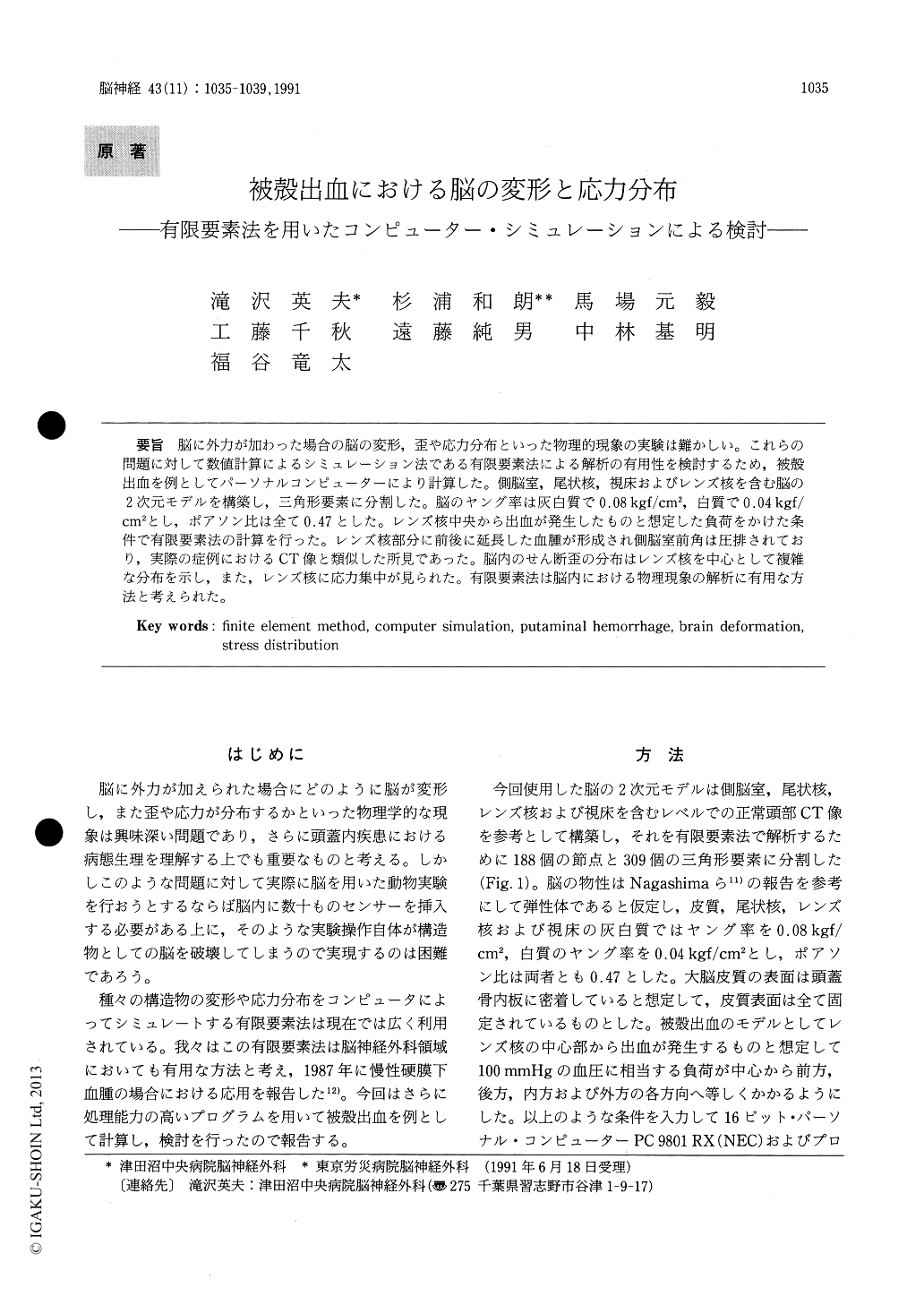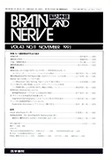Japanese
English
- 有料閲覧
- Abstract 文献概要
- 1ページ目 Look Inside
脳に外力が加わった場合の脳の変形,歪や応力分布といった物理的現象の実験は難かしい。これらの問題に対して数値計算によるシミュレーション法である有限要素法による解析の有用性を検討するため,被殻出血を例としてパーソナルコンピューターにより計算した。側脳室,尾状核,視床およびレンズ核を含む脳の2次元モデルを構築し,三角形要素に分割した。脳のヤング率は灰白質で0.08kgf/cm2,白質で0.04kgf/cm2とし,ボアソン比は全て0.47とした。レンズ核中央から出血が発生したものと想定した負荷をかけた条件で有限要素法の計算を行った。レンズ核部分に前後に延長した血腫が形成され側脳室前角は圧排されており,実際の症例におけるCT像と類似した所見であった。脳内のせん断歪の分布はレンズ核を中心として複雑な分布を示し,また,レンズ核に応力集中が見られた。有限要素法は脳内における物理現象の解析に有用な方法と考えられた。
Deformation and stress distribution caused by putaminal hemorrhage in two-dimensional model brain were analyzed by computer simulation using finite element method. The model brain was com-posed of cerebral cortex, white matter, caudate nucleus, lenticular nucleus, thalamus and lateral ventricle. Young's modulus of gray and white mat-ter was assumed to be 0.08 and 0.04 kgf/cm2, respec-tively, and Poisson's ratio was 0.47 for both of them. Bleeding of 100 mmHg pressure was represented by 4 vectors of force directing anterior, lateral, poste-rior and medial direction from the middle portion of putamen. Calculation of finite element method was carried out by a 16-bit personal computer. The calculated deformation of brain presented a hematoma cavity elongated from anterior to poste-rior direction at the lenticular nucleus. Mass effect of hematoma was noted from displacement of the anterior horn of the lateral ventricle and the inter-nal capsule. Distribution of stress vector revieled the stress concentration at the lenticular nucleus while small stress was noted all over the model brain. Strength of principal stress was presented by contour-line and took the shape of concentric circles with a center at the putamen.
This study suggested that the computer simula-tion by finite element method would be a useful technique to analyze the physical phenomenon of brain suffered from intracerebral hemorrhage.

Copyright © 1991, Igaku-Shoin Ltd. All rights reserved.


